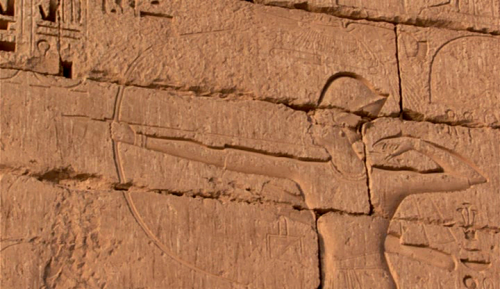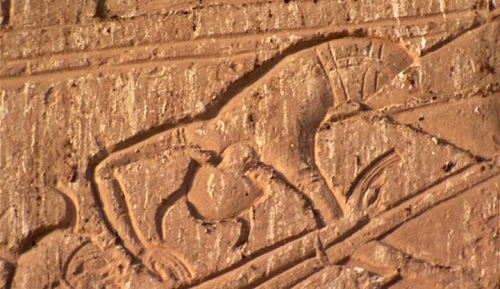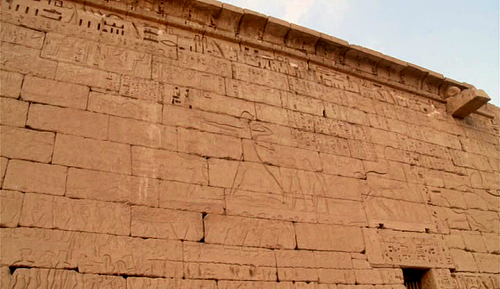#medinet habu
“The Temple of Ramesses IIIatMedinet Habu is an important New Kingdom period temple structure in the West Bank of Luxor in Egypt. Aside from its size and architectural and artistic importance, the mortuary temple is probably best known as the source of inscribed reliefs depicting the advent and defeat of the Sea Peoples during the reign of Ramesses III.
The first European to describe the temple in modern literature was Vivant Denon, who visited it in 1799–1801. Jean-François Champollion described it in detail in 1829. Initial excavation of the temple took place sporadically between 1859 and 1899, under the auspices of the Department of Antiquities. During these decades the main temple was cleared, and a large number of the Greco-Roman period buildings, including a substantial Byzantine Church in the second court, were destroyed without notes or records being taken. The further excavation, recording and conservation of the temple has been facilitated in chief part by the Architectural and Epigraphic Surveys of the University of Chicago Oriental Institute, almost continuously since 1924.“ [X]
Post link
Ancient Worlds - BBC Two
Episode 2 “The Age of Iron”
Medinet Habu, The Mortuary Temple of Ramesses IIIatThebes.The temple decoration consists of a series of reliefs and texts paying tribute to the pharaoh and his many accomplishments. The murals depicting the battles between Egypt and the Sea Peoples (about 1190 BC) are located on the northern outside wall of the temple.
The texts and reliefs regarding the Sea Peoples provide an account of Egypt’s campaign against the “coalition of the sea” from an Egyptian point of view. Rameses III is depicted with his bow drawn, gigantic, while the warships of the invaders gather around his feet; it is a triumphant, propagandistic image of total annihilation. The inscriptions of the pharaoh at his temple record three victorious campaigns against the Sea Peoples.
According to Egyptian accounts the Sea Peoples, a group of distinct peoples of diverse origins, were named as the Peleset, Tjeker, Shekelesh, Denyen, Habiru and Weshesh. Scholars have tried to identify these places as mainland Italy, Sardinia, Sicily, the islands of the Aegean, Palestine and even Minoan Crete and Anatolia, but such claims still remain mere conjecture. The Medinet Habu reliefs provide valuable information about the appearance and accoutrements of the various groups.
Egypt was one of the few civilizations that managed to survive the onslaught of the Sea Peoples but in the following years they appeared in greater numbers, leaving the Egyptians more vulnerable, incapable of defending their possessions in the East.
Medinet Habu, Theban Necropolis, Luxor, Egypt
Post link
Medinet Habu
Column in the colonnade of the second court, incised with hieroglyphic decorations. Mortuary Temple of Ramesses III, Medinet Habu, West Thebes.
Post link









